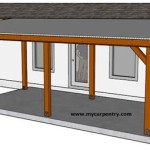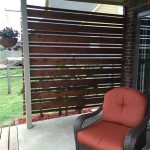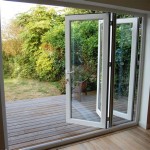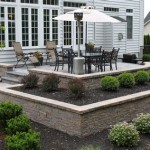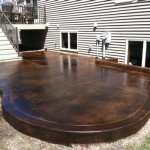How to Build a Patio with Cinder Blocks
A patio constructed with cinder blocks offers a durable and cost-effective addition to any outdoor space. This versatile building material allows for various design options, from simple rectangular platforms to intricate patterns and levels. Whether you're seeking a designated dining area, a relaxing seating space, or a foundation for gardening, this guide provides step-by-step instructions to help you build a patio with cinder blocks.
1. Planning and Preparation
Before embarking on the construction, careful planning is essential. This includes determining the patio's size, shape, and location. Consider the existing landscaping, proximity to the house, and desired aesthetics. Take measurements and mark the perimeter of the patio area using string and stakes.
Next, obtain the necessary materials, including cinder blocks, sand, gravel, mortar mix, and patio pavers (optional). It is recommended to purchase high-quality cinder blocks with a smooth surface for easier installation. Ensure you have a level, shovel, trowel, wheelbarrow, and safety gear like gloves and eye protection.
Prepare the site by clearing any vegetation or debris. Remove topsoil to a depth of 6 to 8 inches to create a level base for the patio. If the ground is uneven, consider using a compactor to compact the soil before adding a layer of gravel for drainage.
2. Laying the Foundation
With the site prepared, begin laying the foundation. This involves creating a base layer of gravel and sand that will provide stability and drainage for the patio. Spread a 4-inch layer of gravel on the prepared site and compact it thoroughly.
Next, add a 2-inch layer of sand on top of the gravel. The sand helps to level the base and provides a smooth surface for laying the cinder blocks. Use a level to ensure the sand is evenly distributed across the entire patio area.
3. Building the Cinder Block Walls
Once the foundation is prepared, you can begin laying the cinder blocks. Start by creating a single layer of blocks around the perimeter of the patio. Use a level to ensure each block is properly aligned and positioned.
Apply mortar mix to the top and sides of each block, using a trowel to spread it evenly. Do not apply too much mortar, as it can create uneven surfaces and impact stability. Allow the mortar to set before moving on to the next row.
Continue building the walls, aligning the blocks and filling the gaps with mortar. Use a rubber mallet to tap the blocks into place and ensure they are level. For added strength, it is recommended to use a concrete block adhesive to secure the blocks together.
4. Adding Finishing Touches
Once the cinder block walls are completed, you can add finishing touches to the patio. This may include covering the blocks with patio pavers, adding decorative elements like landscaping stones or plants, and installing lighting for evening ambiance.
To install pavers, spread a thin layer of sand or polymeric sand over the cinder block surface. Lay the pavers on top, using a level to ensure they are properly aligned. Compact the pavers using a tamper to secure them in place.
For decorative elements, consider adding landscaping stones, shrubs, or flowers around the perimeter of the patio. Choose plants that thrive in your climate and complement the overall design. You can also install outdoor lighting, such as string lights or solar lanterns, to create a warm and inviting atmosphere.

Diy Cinder Block Bench Mince Republic

Diy Cinder Block Bench C R A F T

Create More Outdoor Seating With A Diy Cinderblock Bench

Diy Cinder Block Bench Only 4 Materials Somewhat Simple

6 Creative Cinder Block Projects The Owner Builder Network Backyard Ideas For Small Yards Diy

Create More Outdoor Seating With A Diy Cinderblock Bench

Concrete Thinking How To Make Mod Stackable Sculptures With Blocks The Horticult

Cute Outdoor Seating How To Diy A Cinder Block Bench Hometalk

He Stacks Cinder Blocks In His Front Yard For A Brilliant Outdoor Furniture Idea

Cinder Block And Pavers Step Patio Steps Diy Backyard Paver
Related Posts

